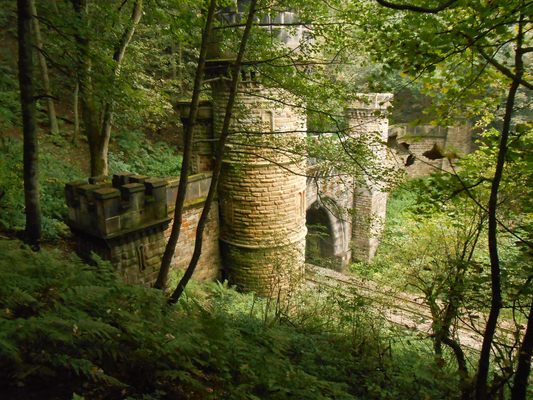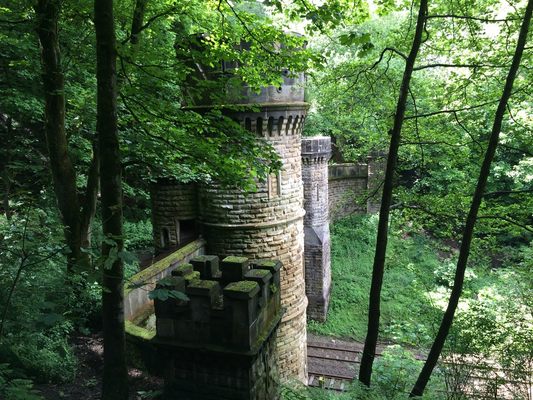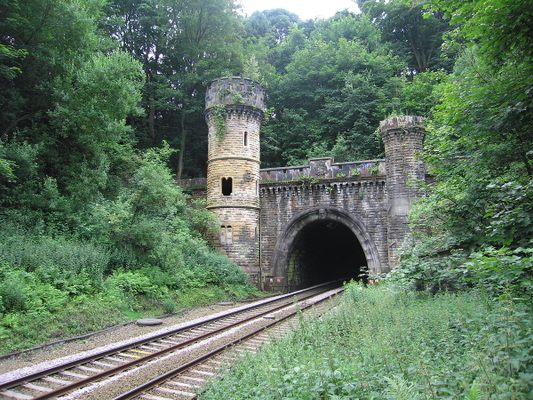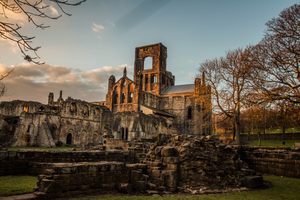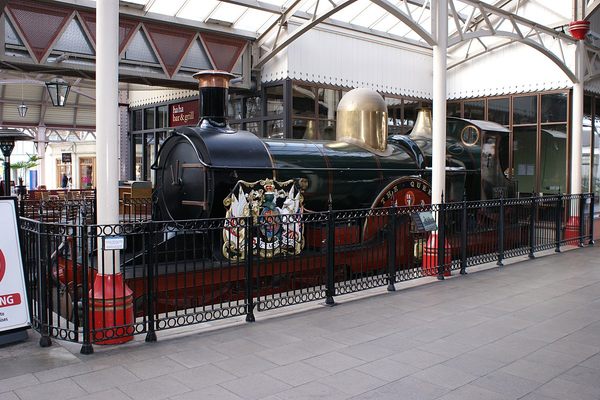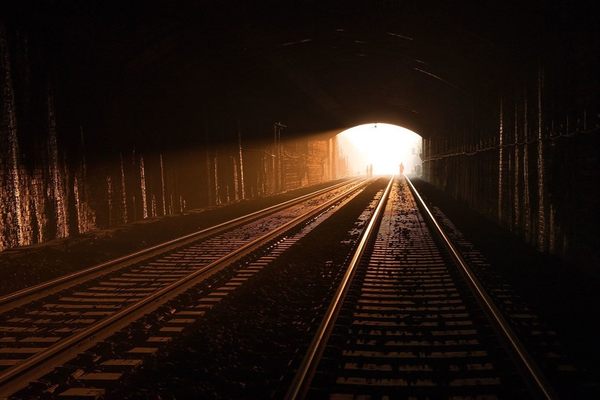About
The Bramhope Tunnel was built for the Leeds to Thirsk railway line at the height of England’s railroad mania in the 1840s. Around the village today, you can see four of the 20 original airshafts intact, a tall sighting tower and plenty of large earth piles that look almost like small hills along the length of the tunnel. If you follow them far enough, they will lead you to this incredible castle-like facade.
At the north entrance of the Bramhope Tunnel, a Gothic-style castellated portal was built from sandstone rock. It has three side towers with turrets, and a horseshoe-shaped archway decorated with a carving of a bearded man (possibly the likeness of the landowner for whom the facade was built). The portal is sadly somewhat in disrepair now, and often has graffiti emblazoned on it.
The tunnel and the visible castle facade were constructed between 1845 to 1849 by hundreds of navvies—railway workers—who came from all over the United Kingdom and lived with their families in the area. Aside from the north portal, the tunnel is known for its impressive length, stretching just over 2 miles long. In the end, when it was built, the entire railway line from Leeds to Thirsk cost over £2 million. It sadly also cost lives. At the time, roughly 23 workers were thought to have lost their lives building the tunnel; however, records of many others have been uncovered since. A replica of the north portal was erected as a memorial to the workers in the churchyard of Otley parish nearby.
Related Tags
Know Before You Go
To get to the tunnel go to the map coordinates 53.88798, -1.61391 and then walk along the footpath from there. Be careful as there is a drop as you get closer to the tracks; walking boots are recommended. The coordinates for the tunnel are at 53.88959, -1.6119.
Published
April 22, 2019

